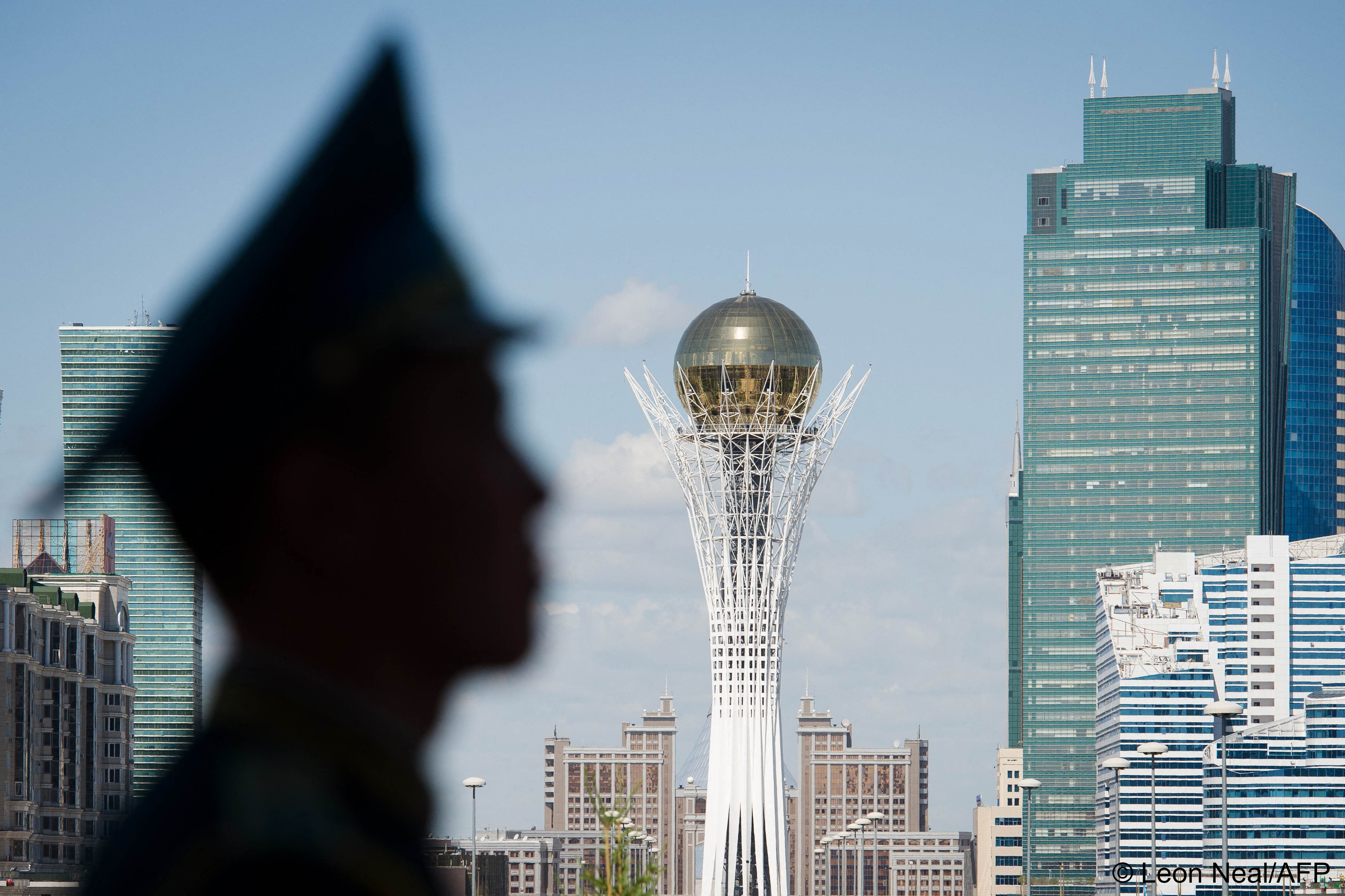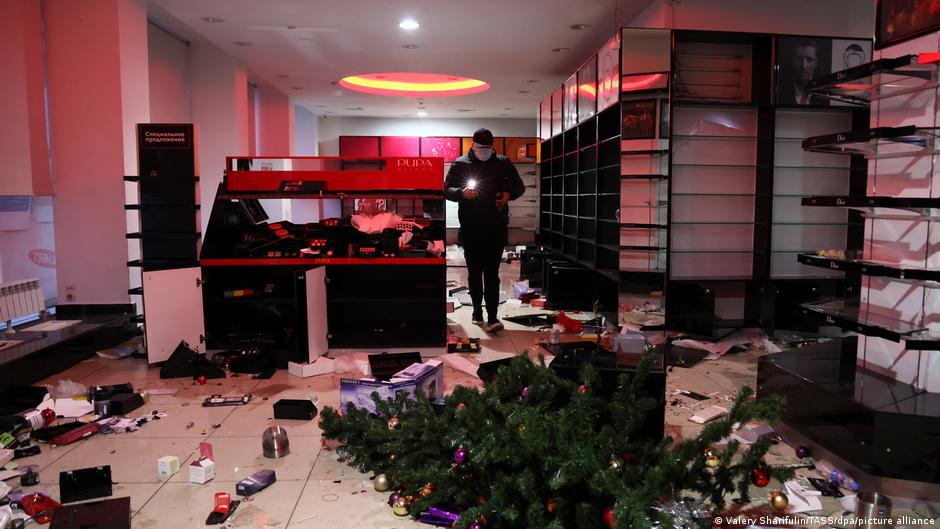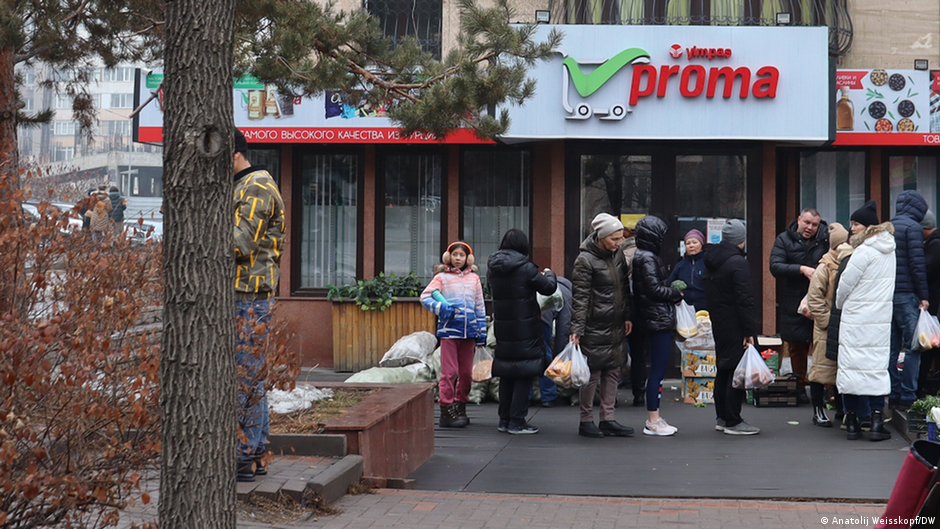Tyrants of the steppe

Bayterek Tower soars above the heart of the city of Nur-Sultan, formerly Astana, which for a few years now has borne the first name of the "leader of the nation" Nursultan Nazarbayev. This urban It-piece, 97 metres high, was designed by British star architect Norman Foster to symbolise a Kazakh legend. The story goes that every day the bird Samruk laid a golden egg in the crown of the Bayterek tree of life, but at night the egg was eaten by a dragon until, yes, until the Kazakhs went out to slay the dragon and the radiant light of the Samruk egg poured out into the vastness of the Kazakh steppe.
Until recently, when Kazakhstan still allowed visitors from abroad into the country, guests could take a lift up the Bayterek Tower to the golden egg at the top, place their hand on the stele with Nursultan Nazarbayev's golden handprint and hear the national anthem or patriotic songs written by Nazarbayev himself.
Compared to the excesses of former neighbouring dictator Saparmurat Niyazov, Nazarbayev cultivated a milder version of the personality cult. Niyazov, who had himself worshipped as the father of the Turkmen – "Turkmenbashi" – and as God's prophet on earth, not only imposed his own brand of national history on the Turkmen with his epic "Ruhnama" about a brave little orphan named Saparmurat Niyazov. "Ruhnama" was also presented in mosques and taught in universities, while prisoners had to swear an oath on the book before being released. "Ruhnama" was part of the recruitment test for doctors and of Turkmenistan's driving test.
By the time new names of the month and year were introduced – in which Niyazov and his family were prominently acknowledged – Niyazov was considered one of the most eccentric tyrants of the present day. His golden statue in the capital Ashgabat, which rotated with the sun, became a symbol of a Central Asian leader cult that still eclipsed both the bombast of Gaddafi and the bloody narcissism of Saddam Hussein.
When Niyazov's dentist Gurbanguly Berdymukhamedov became president following the death of Turkmenbashi in 2006, his beginnings seemed almost modest. Since then, however, he has had a golden equestrian statue of himself and a golden statue of one of Turkmenistan's famous Alabaj dogs erected in the capital.

Nazarbayev: "My monument is Astana"
It is easy to be amused by the leadership style of countries in the vast area between Mongolia and the Caspian Sea. The regimes seem too violent, too bizarre: the proverbial cruelty of the former long-term Uzbek ruler Islam Karimov; the fragility of the so often changing governments in Kyrgyzstan; the new capitals that always look as if someone has just damp mopped through them, like Nur-Sultan with its shopping mall in a giant yurt and the marble facades, which used to be called Astana and before that Aqmola, and before that Zelinograd – and the list goes on. Nazarbayev personally opened all the public buildings. He didn't need a golden monument like Turkmenbashi, he declared: "My monument is Astana."
Meanwhile, there are rumours that the former leader of the Kazakh nation may have left his beloved homeland, which he has plundered to the best of his ability, though his spokesman denied this on Twitter. Nazarbayev's successor, President Kassym-Shomart Tokayev, has ruthlessly turned the situation to his own advantage with Russia's help, re-assigning crucial state offices and ousting Nazarbayev. Whether he has merely used the opportunity for a spring-clean or created it himself is impossible to say in the current news situation and, as far as the result is concerned, unimportant.
Tokayev is willing to let the police and military shoot at demonstrators without warning; he is hardly likely to use the new leeway to open up his country. Kazakhstan, which is eight times the size of Germany, with a quarter of its population and gigantic oil and gas reserves, is unlikely to become a democracy any time soon.
In all fairness, the conditions are not ideal. Unlike the Uzbeks with their glamorous cities like Samarkand or Bukhara, the Kazakhs, like the Kyrgyz, were nomads. For centuries, they roamed between the Syr Darya and Irtysh rivers with camels and cattle. In the 15th century, they united into three "hordes", whose rivalries were fomented and exploited by the Russian tsars. In 1731, the Khan of the Small Horde was the first to swear allegiance to the Russian Tsarina, the other two Khans followed. Russian settlers arrived, including Fyodor Dostoevsky.
For Dostoevsky, the Kazakh expanse was still a place of clarification, of purification, indeed, of freedom. He lived for five years as an officer in Semipalatinsk, today's Semey, intoxicated by the "open steppe, the pure steppe". Rodion Raskolnikov from the novel Crime and Punishment, experienced a re-birth at the sight of the sun-drenched plain: nomads passed by on the horizon, "people who were completely different from the people he knew". Time seemed to stand still. Raskolnikov, the repentant murderer, found his way back to being human.
Well, time moved on. One hundred years later, Semipalatinsk became a nuclear test site: "Poligon", Kazakhstan's Ground Zero. More than 600 nuclear explosions, in tunnels, on land, in the air, destroyed a landscape the size of Belgium in four decades. Today, the remains of the measuring towers rise like shark fins from a sea of grass, and the cancer rate is high. The "Poligon" is the most obvious, unmistakeable legacy of Soviet rule. Other fault lines run deeper.

Two million Kazakhs died during Soviet-imposed forced settlement
As in Kyrgyzstan, Islam was relatively late to take hold in nomadic Kazakhstan and never penetrated the society, which remained wedded to shamanism and ancestor worship, as deeply as it did the urban cultures of the region: after all, there were no mosques on the steppe. To this day, many describe the Kazakhs' relationship with Islam as "pragmatic".
In his book "Inside Central Asia", Asia expert Dilip Hiro recalls an Islam debate among Kazakh intellectuals before the 1917 Revolution. At that time, thinkers discussed the relationship between Sharia and adat, the traditional moral code, with some of them calling for Islam to be adapted to Kazakh culture. With the arrival of Bolshevism, however, the question became moot.
The Bolsheviks wreaked havoc in their modernising frenzy. Certainly, they brought education and electricity, built schools, power stations and canals and liberated women. But they forced the nomads to leave their yurts and settle down, collectivising the cattle in the process. Many Kazakhs slaughtered their cattle before they could be confiscated. Others starved to death. Two million Kazakhs died during the forced settlement process, writes Beate Eschment in "Zentralasien – Ein Lexikon ", one million fled to China or Mongolia.
When the Soviet Union disintegrated, Kazakhstan was the last country to declare independence. The other states of Central Asia were also virtually coerced into independence. Having spent 70 years under Soviet rule, Kazahkstan, like many of its post-Soviet neighbours, has found itself unable to develop a political identity as a nation-state. The cult of personality, the extreme personalisation of rule, all the schools, streets and cities named after decades of ruling autocrats, the mythologically dressed-up manifestos meant to steer the search for a national identity in the right direction are just a few of the consequences.
There is still no clear picture of exactly who was protesting and why, and who carried out the looting in Kazakhstan. But one of the slogans was 'Grandfather, get lost', targeting Nazarbayev and his kleptocratic family. The days of the beloved leader are numbered.
© Suddeutsche Zeitung / Qantara.de 2022
